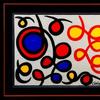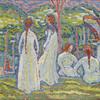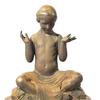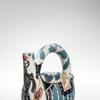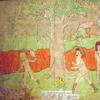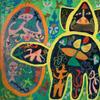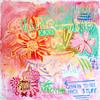Getty Trust and Rijksmuseum Sign Agreement to Pursue Digital Innovation in Art Historical Research and Conservation
- LOS ANGELES, California
- /
- March 22, 2016
The J. Paul Getty Trust and Netherlands Institute for Conservation, Arts and Science (NICAS) under auspices of the Rijksmuseum announced they have entered into a Memorandum of Understanding that outlines a future of digital innovation in the visual arts and pledges the shared strengths and commitments of both organizations to help develop the tools, techniques and training to achieve it. Dutch Minister of Culture, Education and Science Dr. Jet Bussemaker was on hand for a brief ceremony at the Getty Center that also included Dr. Robert van Langh, Head of Conservation and Research of the Rijksmuseum, and Prof. dr. Robert G. Erdmann, Senior Scientist at the Rijksmuseum and Professor of Conservation Science at the University of Amsterdam.
“We are delighted to join the Getty in pursuing this vision for the technological future of art history and conservation,” said Dr. Bussemaker. “We share a commitment and a history of leadership in advancing technology. It’ll be exciting to watch how these efforts develop.”
The Netherlands Institute for Conservation, Art and Science (NICAS) is an interdisciplinary research center for art history, conservation and restoration. It is a collaboration between NWO CEW, the national science funding organization of the Netherlands; the Rijksmuseum; RCE, the national cultural heritage agency of the Netherlands; University of Amsterdam and Delft University of Technology.
The partners will focus their efforts on:
• joint research and development of computing tools and techniques;
• development of innovative analytical imaging techniques and new data models;
• aggregation and fusion of this new data with existing metadata and repositories to give deeper understanding of physical and contextual details of works of art;
• wide dissemination of this data and results along with new visualization and analytical tools for highly specialized research and for broad access to cultural heritage resources;
• training and education for art historians and conservators as well as education modules for university coursework and continuing education programs.
“We are pursuing an ambitious vision,” said J. Paul Getty Trust President and CEO James Cuno. “But it’s an appropriately aspirational one. Together we can lead the way in developing new technologies for gathering, processing and visualizing the vast amounts of data that is transforming our fields, and make sure that scholars, conservation scientists, and other professionals have the tools and training they need to break new ground in research and conservation.”
Both organizations have been in the forefront of digital innovation, and have previously worked together to move the field forward.
The collaboration between NICAS and the Getty will build on the innovative tools utilized in the Bosch Research and Conservation Project website, the latest example of digital innovation supported by the Getty Foundation. By combining the latest technologies from imaging, machine learning, and interactive visualization with the expertise of scientists, conservators, and art historians, the collaboration will develop a wide array of powerful tools to help the world to access, understand, and preserve its cultural heritage.
The Getty has been a leader in the digitization of art historical resources, with its development of the recently announced Scholars Workspace; the Online Scholarly Catalogue Initiative (OSCI); the development of databases and standards, such as the Art and Architecture Thesaurus and the Thesaurus of Geographic Names, for online research; and its ongoing commitment to digitizing objects from its collections and art historical materials from its archives and making them freely available. Other projects like ARCHES, an open-source software for the management of cultural heritage, and DISCO: Data Integration for Conservation Science, are also forging new digital territory in heritage conservation.
“We want to continue moving the field forward. By identifying where we want to be in the future, we can design a course of research and development to get there,” said Cuno. “This joint effort helps us chart that course.”


270x400_c.jpg)





